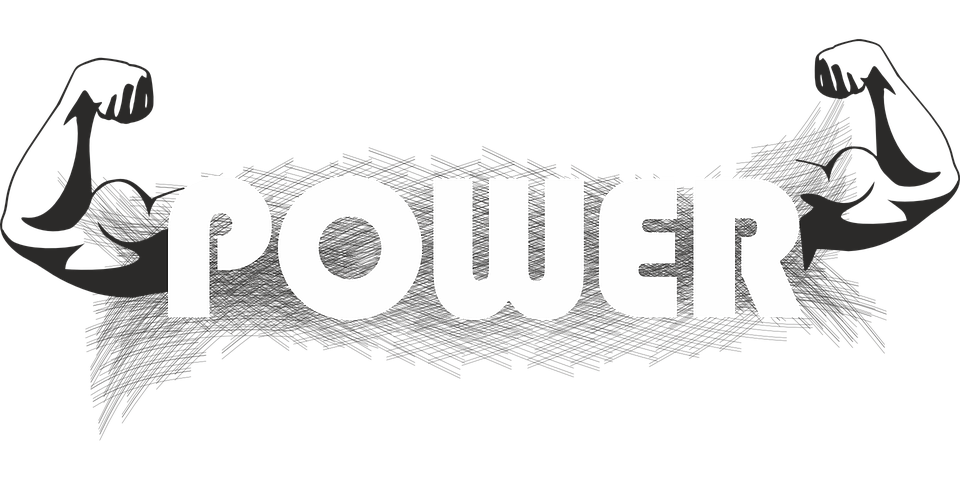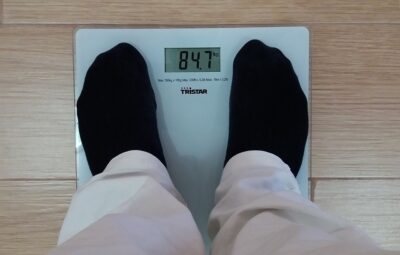Medical experts are currently analyzing the possible negative effects that may come with using intermittent fasting as a way to lose weight. A point of contention is whether periodic fasting causes a decrease in lean body mass, specifically muscle mass.
What is causing people to be concerned about the response to this query? Though more research on intermittent fasting is continually taking place, we currently have evidence to suggest that those attempting to slim down by chronically restricting their caloric intake wind up losing a quarter to a third of their weight in lean body mass.
It is understood that when trying to shed pounds, the ideal situation is to lose fat while keeping as much muscle mass intact as possible. Consequently, if intermittent fasting for weight loss leads to a similar or higher amount of muscle mass reduction compared to sustained calorie limitation, it would not be as helpful a tactic for shedding pounds.
What Is Intermittent Fasting?
Periodic fasting is a general term used to describe when someone purposefully abstains from eating any food with calories for a short span of time. If you would like to gain knowledge regarding the various approaches of intermittent fasting, you can have a look at our notes regarding time-limited eating and consuming one meal a day.
This guide zeros in on intermittent fasting that spans 16 to 24 hours several times during the week, otherwise termed time-restricted eating. However, we will refer to this practice by its more widely known name, “intermittent fasting.”
We will not bring up any conversations regarding extended fasts beyond a day since current studies on periodic fasting generally center around time intervals shorter than 24 hours.
Investigations into how chronic starvation affects the body’s composition (being deprived of food for days or weeks) are present in the body of literature but separated from researching the impact of shorter, intermittent fasts. This is because long-term fasting produces very dissimilar changes in the body. Hence, the studies concerning prolonged malnutrition are essentially unrelated to the ongoing discussion.
Why Is There Controversy About Whether Intermittent Fasting Causes Muscle Loss?
Questions concerning the impact of intermittent fasting on weight loss are being discussed, questioning if it is solely because of calorie reduction or if quick fasts can cause the body to change from using glucose as energy to using fat.
If fasting off and on is a straightforward means of reducing calories without having to keep track of them, it could be a simpler and more lasting way to drop pounds as compared to constantly declining calories, which is hard to uphold and usually not effective for extended amounts of time.
The downside to this basic description is that intermittent fasting will have the same issue as restricting calories, which could mean up to a quarter of the lost weight could be from lean body mass.
Intermittent fasting may be the optimal weight management approach if it helps the body use fat stores for energy while leaving muscle tissue untouched.
Many have become engrossed in trying to discover the accurate explanation for how intermittent fasting results in weight loss instead of acknowledging the possibility that both suggested explanations may be accurate.
When we cease fasting, we don’t necessarily have to consume the same amount of calories that were missed during the fast; this results in an inherent reduction in caloric intake. Also, when not eating – specifically if on a low-carb diet – the liver’s glycogen reserves usually become depleted within a day, resulting in fatty acids being taken from fat cells to use up as energy.
In order to find out if intermittent fasting causes a person to lose lean body mass, we need to look into how the body obtains energy during a period of 16 to 24 hours in which no food is eaten.
Understanding Short-Term Fasting
A significant issue with the discussion surrounding the effects of intermittent fasting on muscle mass is that it pays too much attention to the organism’s reaction in scenarios of extended starvation. Lots of the research on this subject includes examinations of abstinence from eating for extended periods of time.
If you’re just doing a 24-hour fast, you only need to pay attention to the time before and during the fasting, not what happens over the span of numerous drawn-out weeks while going without food.
Given the lack of precise, hour-by-hour details existing in current scientific research, we must draw conclusions from the existing, yet more generalized, literature on how energy is used and stored in the body during the initial day of fasting.
That is quite hard to achieve; it is similar to trying to get your bearings in Manhattan with just a broad map of the state of New York. You’ll have to act with estimation when it comes to navigation, mostly depending on how close you are to the shoreline.
We need to closely analyze the most important data and make assumptions where necessary to understand the effects of fasting for 16 to 24 hours on the body.
We should begin by talking about how the human body harnesses energy during a period of 16 to 24 hours when not eating. At that point, the liver metabolizes a great deal of its glycogen to release glucose, which can then be utilized by the rest of the body for energy. As the available glycogen runs out, the body is forced to seek alternative sources of fuel.
It appears that during the earliest period of fasting, between 16 and 24 hours, glucose production drops because of diminishing glycogen stores without any concurrent rise in the rate of gluconeogenesis. It should be understood that the process of gluconeogenesis is occurring as it usually does. However, the rate of it remains the same even at the beginning stages of fasting.
In other words, the body does not immediately resort to using muscle tissue for energy when glycogen stores have been depleted. Rather than what people may think, fat is broken down into ketones, and these ketones are then utilized as a source of energy.
After going without food for a night, it is normal for some amino acids to be released from skeletal muscle. As an example, a male who weighs 154 pounds (70kg) will have their muscles liberate enough amino acids for the liver to synthesize around 40g of glucose employing gluconeogenesis. At the beginning of a fast, the liver will generate somewhere in the region of 150-400 grams of glucose each day. Therefore, the amount of muscle that contributes to the production of fasting glucose is small (40 grams).
Science of Fasting and Muscle Loss
Fasting does not lead to muscle loss, largely due to the presence of growth hormones.
Typically, hormones such as growth hormone have a single surge in the morning and a separate surge in the evening.
Investigations have revealed that while fasting, your body experiences certain periods of heightened growth hormone multiple times in the course of a day. Your body produces surges of growth hormone more often when you are not eating.
Growth hormone levels can go up by as much as 2000-3000% after just 24 hours — a truly incredible rate of increase! #ARMEXPLOSION
When evaluating the increase in GH, the amount of micrograms is not exceptionally large; however, it would not be detectable in a typical metabolic condition. This surge in activity is going to carry on for the next few hours.
Testosterone is an additional hormone that will assist in muscle growth.
- Short-term fasting has been shown to increase Leutenizing Hormone (LH), which is a precursor to testosterone. In a study done on obese men, LH increased by 67% after 56 hours.
- Another study found that obese men saw a 26% increase in GNHR (Gonadotropin-releasing hormone), which is another testosterone stimulant. The same study found that men who were working out saw a 67% increase in GNHR, which led to a 180% boost in testosterone.
There are many positive hormonal effects stemming from fasting, and if you are having trouble getting larger or have reduced testosterone levels, it could be a consequence of the lack of hormones produced by your endocrine system. Strategically engaging in brief periods of fasting can wake up your muscle-building pathways and help you avoid becoming stagnant.
Why Am I Losing Muscle While Fasting?
Despite this, many people are claiming that their muscle mass decreases while fasting. Why is that?
It is important to understand that it is possible to reduce body weight and not lose muscle at the same time. Losing weight doesn’t mean you’re burning fat, either.
If you are eating an ordinary diet that does not include intermittent fasting or has enough carbohydrates, your body will retain more glucose as glycogen. This will give you a rounder, fluffier appearance with more fullness and roundness of veins.
Once you commence fasting or when you consume a diet that is low in carbohydrates, your body will begin to discharge some of the glycogen and the water it stores. It could appear that you are losing muscle since some of your dimensions are shrinking, but in fact, your lean body mass is just becoming firmer and more compact.
To sum it up, intermittent fasting does not guarantee that you won’t lose any muscle. If necessary, your body will be able to do it, and it will.
Two possibilities exist for why your lean muscle mass might start diminishing.
(1) Gluconeogenesis While Fasting
The initial step is gluconeogenesis, which entails transforming protein into glucose.
Gluconeogenesis is prompted by necessity rather than abundance, occurring when the body has to turn to its own organs and muscles to supply it with the glucose it needs to survive.
The cause of gluconeogenesis happening is due to the lack of other energy sources, such as fat. Your body is not yet able to process ketones effectively, and the alternative form of energy it looks towards is protein.
It’s beneficial to enter ketosis quickly when participating in fasting or consuming fewer calories. The eating plan known as ketogenic is designed to make your body burn its own fat stores exclusively while maintaining its muscle mass due to the energy ketones offer the brain, which helps to preserve protein.
You should empty your liver glycogen supply before beginning a fast in order to avoid too much catabolism.
- Make your last meal low in carbohydrates so your liver can produce ketones more rapidly.
- Exercising on an empty stomach, like walking or steady-state cardio, can also help you to get into ketosis faster.
Once you begin using ketones for energy, your fat burning will increase, and your muscles will remain safe due to the prolific source of fuel that your body has access to – its own fat.
(2) Autophagy and Muscle Loss
A possible alternative is: You may experience muscle loss when fasting due to hindered autophagy.
Autophagy is a process by which cells rid themselves of old and damaged components, transforming them into usable energy.
Research has indicated that autophagy is essential for preserving muscle tissue.
- If you’re doing a caloric restriction diet but blocking the effects of autophagy, then you’re going to keep yourself in a semi-starvation state because your body will never switch into ketosis. This leads to gluconeogenesis and so on – the bad stuff.
- If, however, you allow autophagy to kick in, whether that be through strict water fasting or a fasting-mimicking ketogenic diet, then your also stimulating the other growth hormones we’ve been talking about so far, and it’s going to preserve your muscle.
This implies that if you are looking to reduce body fat or increase your life expectancy, refraining from consuming all calories would be beneficial.
Consuming as few as 50 calories and 2-3 grams of leucine can prevent the body from entering autophagy and create a fed state instead. It would be more advantageous in terms of burning fat, maintaining muscle mass, and increasing longevity if you abstain from eating any food during your fast.
Can Fasting Make You Build Muscle
But what about the opposite? Can fasting actually make you build muscle?
The level of success you achieve depends upon the intensity of your workouts and the number of calories you consume within the timeframe when you are not fasting. I’d like to put focus on the hormonal side of things right now, and I’ll cover nutrition in a later video.
The primary source of growth within the human body is the mTOR (mammalian target of rapamycin) pathway. This will set off an expansion in all parts of the body – muscle, fat, and potentially some cancer cells. To create both muscle and longevity, it is essential to sustain an optimal level of mTOR that lies between excess and deficiency.
Studies have revealed that fasting decreases the production of mTOR and IGF-1, which are required for cellular growth, by augmenting the amount of their repressing protein called IGFBP1.
Here’s how to prevent muscle loss while fasting:
- You want to get into ketosis ASAP when doing intermittent fasting.
- You have to keep autophagy elevated and active.
- You don’t want to be releasing too much cortisol, which will counteract testosterone.
- You should be eating a diet that teaches your body to burn fat and ketones for fuel for at least the majority of the time so that when you do have to skip a meal or not eat for 3 days, then you’re not going to cannibalize all your gains.







